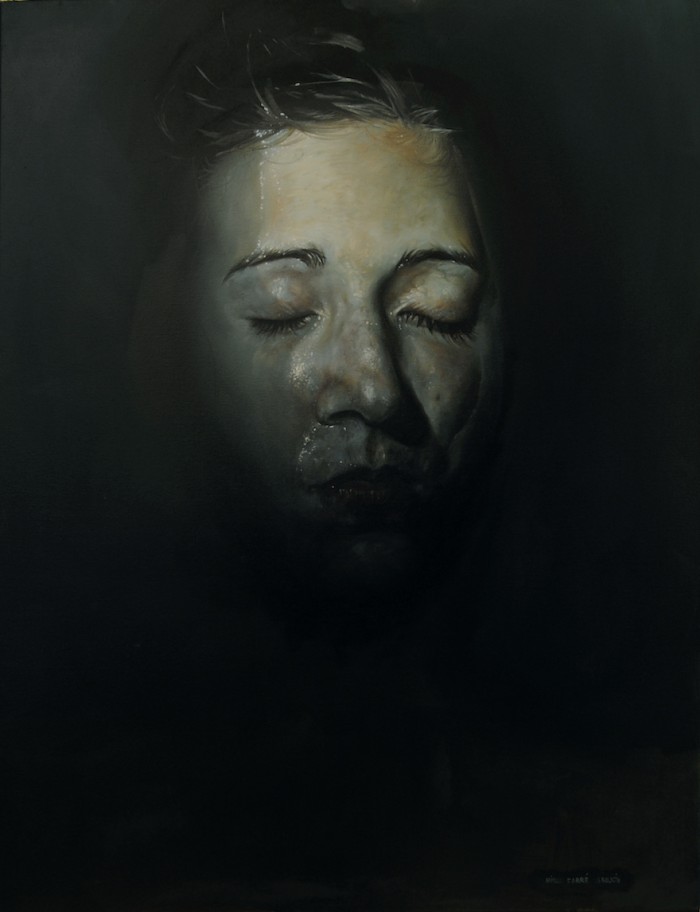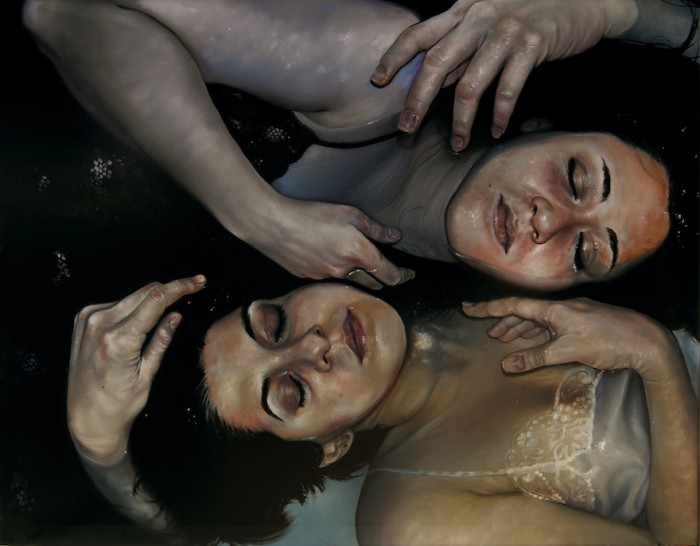Considered one of the most complex paintings in Western art, The Arnolfini Portrait captured the imagination of the 24-year-old artist, Núria Farré. Then only a teenager in history class, Farré says she remembers seeing a small picture of the painting inside one of her textbooks while listening to her teacher explain every detail of it.
“It was a very special painting, so detailed, so complex, and so mysterious that I fell in love with it. Since that day I am especially interested in art. That day I discovered what I wanted to do in life,” says the Barcelona-based artist.
Today, Farré paints some of the most realistic water paintings of women. The women are often submerged in water.
She says the paintings are self-portraits of her even if she is not the model. “Water wasn’t the subject of the paintings, it was only a mask ... I’m very reserved, I am a little afraid of people discovering the real me.”
She started painting the series featuring women between 2015 and 2016 as a way to come out from behind that mask. But now she is more interested in painting in colour.
“Now I’m more interested in colour, in the vibration of colours, in the chiaroscuro, the contrast. I also discovered gold, the byzantine art and its mysticism… everything has changed a little from the water paintings.”
The portraits were symbolic paintings inspired by Gaston Bachelard’s Water and Dreams essay.
She had been at the end of her teenage years and felt very melancholic, anxious and trapped in the in-betweenness of no longer being a child but not quite an adult yet.
“The fact that the paintings were realistic or not wasn’t important for me. Many people describe my work as hyper-realistic but I don’t see myself like that. Being realistic is not what interests me the most; it’s just my natural way to paint, something accidental.”
Farré’s training began in 2008 when she studied fine arts subjects at A Levels at the Escola Massana, Barcelona. Then in 2010, she did a Fine Arts degree at the University of Barcelona before finishing her Master’s degree Educator’s Training for Professional, Secondary, and Language Teachers at the same university in 2015.
Although her work has been recognised widely, having showcased her work at Young Art Taipei as well as Art Madrid early this year, she still finds it hard to make a living as a young artist in Barcelona.
“First of all nobody tells you how this is done, how the market works. Second, our economy has suffered a lot the past few years. All of us have stories about all that we lost during the crisis,” she says.
The 2008 economic crisis has made people a bit apprehensive about becoming artists and they choose more traditional jobs like working in a bar. She says that the only way to be a full-time artist in Barcelona, especially when you’re under 30, is to live with your parents and “be strong, never stop painting. Art is a career of resistance.”
Besides the difficulty of sustaining yourself as a full-time artist, she believes that art has the potential to change the world as it brings us new ways of seeing the world.
“It has the potential to destroy prejudgments and barriers of expression. It has the key to spread an idea around the world.”
She is really excited about what the next year has in store for her as she recently quit her job as an art teacher to travel the world. She has a solo exhibition coming up in October at Murcia in Spain before heading to Argentina for a month. Then she will be travelling to Rome, where she will live and work on a new project for six months, before heading to Taiwan for her next solo show.
See more of her work.









